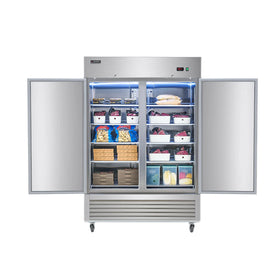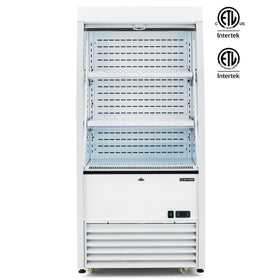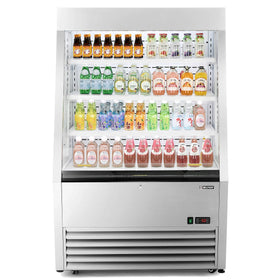The number of businesses in the U.S. food truck industry has actually been growing now for the past five years. So, starting a food truck business is an exciting and attractive venture with a good chance of success. However, you cannot just go out, get a truck, find a spot and start serving out your food. The most important part of starting a food truck business actually takes place before you get the truck. You need to plan, research, and understand regulations and how to purchase the commercial kitchen equipment you will need. You will definitely need some help, so. here’s a step-by-step guide on how to start your food truck business, and some suggestions on the equipment you need.
Step 1: Research the Market
Look into the food truck scene in the area where you intend to set up your truck. Make a list of the main competitors within the area, study their menus, and take note of the kinds of food they serve. Then, find a gap in the market where you can offer something different and unique.
Step 2. Develop a Concept and Menu

The next step is to choose a food concept that you’re passionate about but that also sets you apart from the competition. This step is where you define your niche.
- Define your niche: A niche is a segment of the market that consumes a particular product or service. To carve out your niche, you can consider the type of cuisine, dietary options (vegan, gluten-free, etc.), and whether you want to focus on snacks, meals, or beverages.
Marc Mart, for example, is one of the top 10 most popular food trucks in America. It specializes in comfort food and offers items that appeal to a particular segment of the population.
- Create a Menu: A good menu is one which is simple, scalable with items that are easy to prepare and serve from a truck.
Ensure the ingredients are accessible and affordable. Focus on consistency and quality.
Step 3. Write a Business Plan

The primary reason why food trucks fail is because they can’t effectively manage operation costs. You need a strong business plan in order to secure financing and keep your business on track. Your plan should include the following fundamental areas:
- Executive Summary: An overview of your food truck concept, mission, and goals.
- Business Description: Details about the food truck industry, your business model, and your target audience.
- Market Analysis: Research your competition and customer base.
- Organization and Management: Outline your business structure (e.g., sole proprietorship, LLC) and key team members.
- Menu and Pricing: Itemize your menu with prices, considering the cost of goods and profit margins.
- Marketing and Sales Strategy: Define how you’ll promote your food truck, attract customers, and increase sales.
- Financial Plan: Include projected startup costs, operational costs, revenue forecasts, and a break-even analysis.
Step 4. Secure Financing
Starting a food truck can be quite expensive. Most estimates agree that you would require in excess of $90,000 for the truck, equipment, permits, and other startup expenses. Fortunately, there are a couple of options when it comes to raising this capital.
- Personal Savings: If you have savings, you can fund the business yourself.
- Business Loans: Apply for a small business loan through a bank or credit union.
- Investors: You may seek out private investors or business partners who are willing to invest in your food truck.
- Crowdfunding: Platforms like Kickstarter or GoFundMe can help raise money for your truck.
- Grants: Look for small business grants available through government programs or local organizations.
Step 5. Buy or Lease a Food Truck

One of the most crucial decisions you will have to make when starting out is whether to buy a new, custom-built food truck or a used one that’s already equipped. The main advantage of a new truck is that it offers more customization, but used trucks are more affordable. Expect to pay $50,000–$100,000 for a new truck and $20,000–$50,000 for a used one.
Before Buying a Food Truck:
- The truck must be designed to meet local health codes and also equipped with the necessary appliances (grills, fryers, ovens, refrigerators, etc.).
- Before purchasing, ensure the truck passes all required health and safety inspections.
Step 6. Obtain the Necessary Licenses and Permits
The licenses and permits you need to get your food truck business operating vary depending on the location in question. Some typical permits include:
- Business License
- Food Truck Permit
- Health Department Permit
- Parking Permits
- Fire and Safety Permit
- Employer Identification Number (EIN): If you plan to hire staff, you’ll need an EIN from the IRS.
According to the U.S. Chamber of Commerce’s Food Truck Index, an entrepreneur could spend about $29,000 on permits, licenses, and legal compliance.
Step 7. Purchase Equipment and Supplies
This is the step where you purchase all the necessary equipment for the day-to-day operation of your food truck. The smart way to go about this is to get all your equipment from the same supplier. This way, you can benefit from more favorable discounts, consistent quality across all equipment, and reduced shipping costs. Also, the entire process will be effectively streamlined.
There are many big-time suppliers of commercial kitchen equipment out there. If you were to purchase from Wilprep’s kitchen, for example, you could get all the following essential food truck equipment in one go:
Cooking Equipment
A lot of cooking goes on in a food truck, and you are going to need the right cooking equipment. Based on your menu, you might need Griddles, stoves, or deep fryers. Wilprep offers a variety of stoves, commercial griddles, and gas deep fryers of different sizes to meet all your needs. Check out this compact, food-truck-size commercial griddle from Wilprep.
Wilprep’s Commercial Countertop Gas Griddle.

- This gas griddle from Wilprep has a surface of about 24 inches which is heated by 30,000 BTU U-shaped burners, ensuring speedy and uniform heating.
- The expansive 24 x 20.5 in. cooking surface of this gas countertop griddle makes it easy to cook large batches of your favorite dishes.
- It is designed to become your go-to choice for effortlessly preparing a variety of delights, from fluffy pancakes to savory steaks.
Wilprep has more commercial griddle options, with models up to 36 inches and 48 inches and others as small as 16 inches. No matter the size of your truck, you will find a fitting unit with Wilprep.
Refrigeration and freezer units
Commercial refrigerators lie at the heart of any commercial kitchen. You will need commercial refrigerators to ensure food safety, maintain the quality of your items (especially perishables), and comply with health regulations.
You can consider Wilprep’s Commercial Solid Door Reach-In Freezer, a compact unit that would be ideal for any food truck.
Wilprep’s Commercial Solid Door Reach-In Freezer
- Wilprep's 27" single-door commercial freezer offers a volume of 18.7 cu. ft. and a temperature range of -11 to 14°F, allowing you to properly store meat, seafood, desserts, and other frozen foods for your business. It comes with 5 adjustable shelves, each capable of holding up to 88 lb of items.
- This unit has a Cubigel compressor and a copper evaporator that work together to ensure fast, even cooling and optimal temperature levels throughout your reach-in freezer. The auto-defrost design prevents frost or ice buildup.
- This refrigerator's interior and exterior are crafted from quality stainless steel, ensuring lasting durability and hassle-free cleaning.
Wilprep has a wider variety of commercial refrigerators, including reach-in models, display models, and open-air merchandisers. These can help facilitate operations in your food truck kitchen and display your items to potential customers. Check out the Wilprep collection to find one that fits.
Food Prep Equipment
Food prep equipment like slicers, mixers, food processors, prep tables, cutting boards, and knives are crucial in a food truck because they speed up the food preparation process and allow you to serve more customers in a timely manner. Wilprep has a variety of high-quality but affordable food prep equipment from which you can make suitable choices for your truck.
You will also need cleaning supplies, disposable containers, napkins, and utensils, as well as a fire extinguisher and first aid kit.
Step 8. Find Suppliers
You’ll need reliable suppliers for food, beverages, and other products.
- Buying fresh ingredients locally can differentiate your food truck and support your community.
- You may purchase in bulk from food wholesalers to reduce costs.
- If your menu requires specialty ingredients or items, find suppliers that offer them in bulk.
Step 9. Marketing Your Food Truck
Branding: Develop a strong brand identity, including a catchy name, logo, and truck design. Your truck should be visually appealing and easy to recognize.
Social Media: Use platforms like Instagram, Facebook, and Twitter to promote your food truck, share your location, and engage with customers. Social media is crucial for food truck businesses.
Website: Create a simple website with your menu, schedule, contact information, and a way to book catering events.
Step 10. Launch Your Food Truck

Soft Opening: Consider doing a soft opening before the official launch to test your operations and gather customer feedback.
Grand Opening: Promote a grand opening event on social media and offer special deals or giveaways to attract customers.
Adjust and Scale: After your launch, gather feedback, refine your operations, and consider expanding to more locations and events or adding more trucks.
Wilprep: Your Companion for Success
Wilprep is a global supplier of commercial kitchen equipment. Our goal is to see you succeed. You can trust Wilprep for top-quality equipment and useful tips for success in the food business. Start your journey with Wilprep by checking out some specially recommended equipment for your food truck business.
Getting your food truck launched is a significant achievement, but the hard work does not end there. You need to monitor your expenses and manage your finances assiduously. However, by following these steps, you’ll be well on your way to starting and successfully operating your food truck business!










